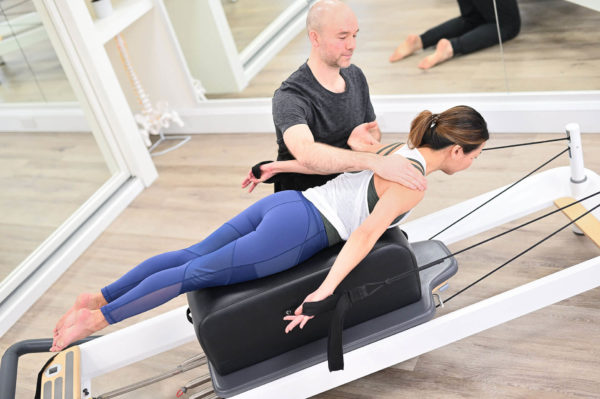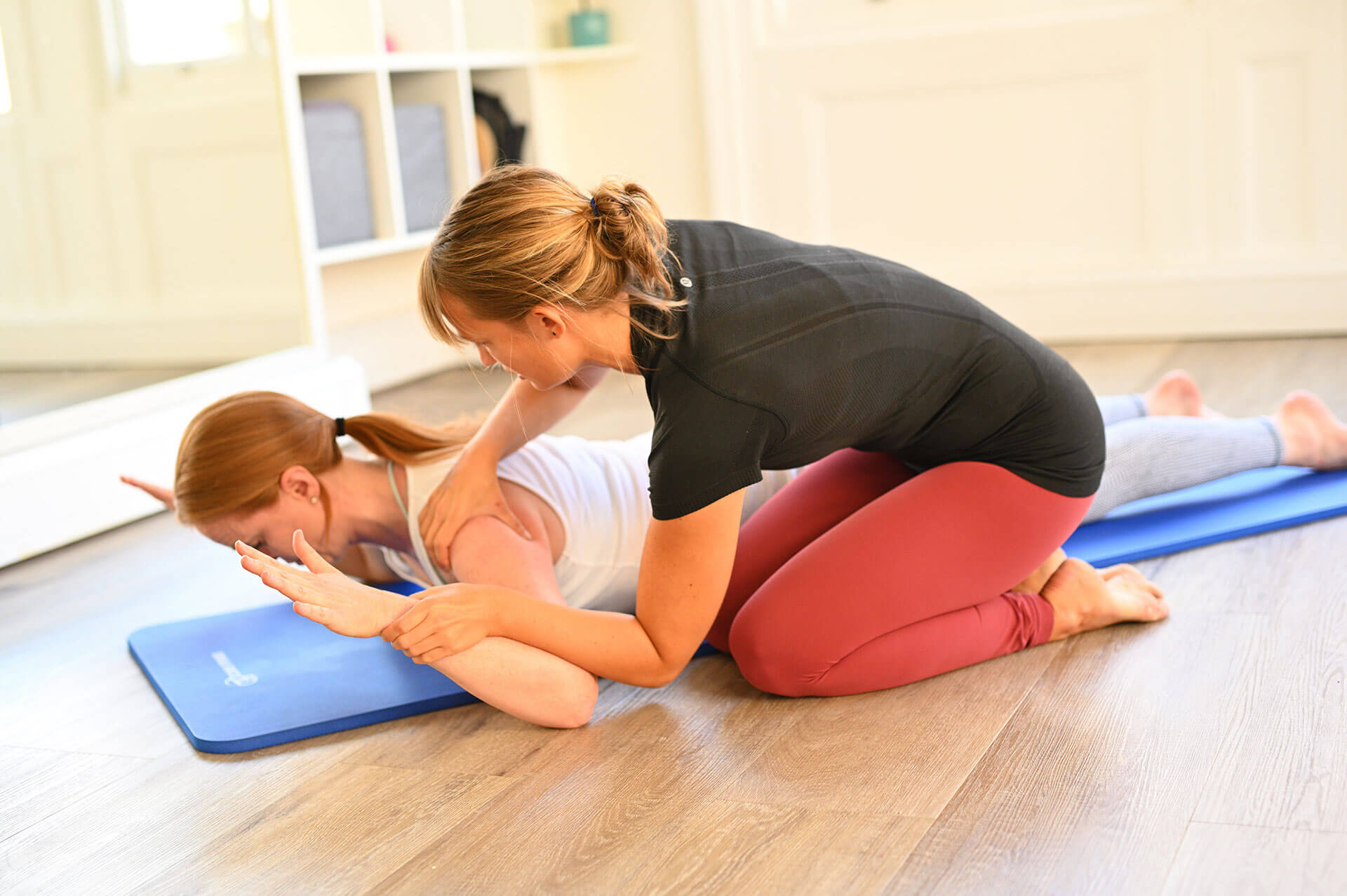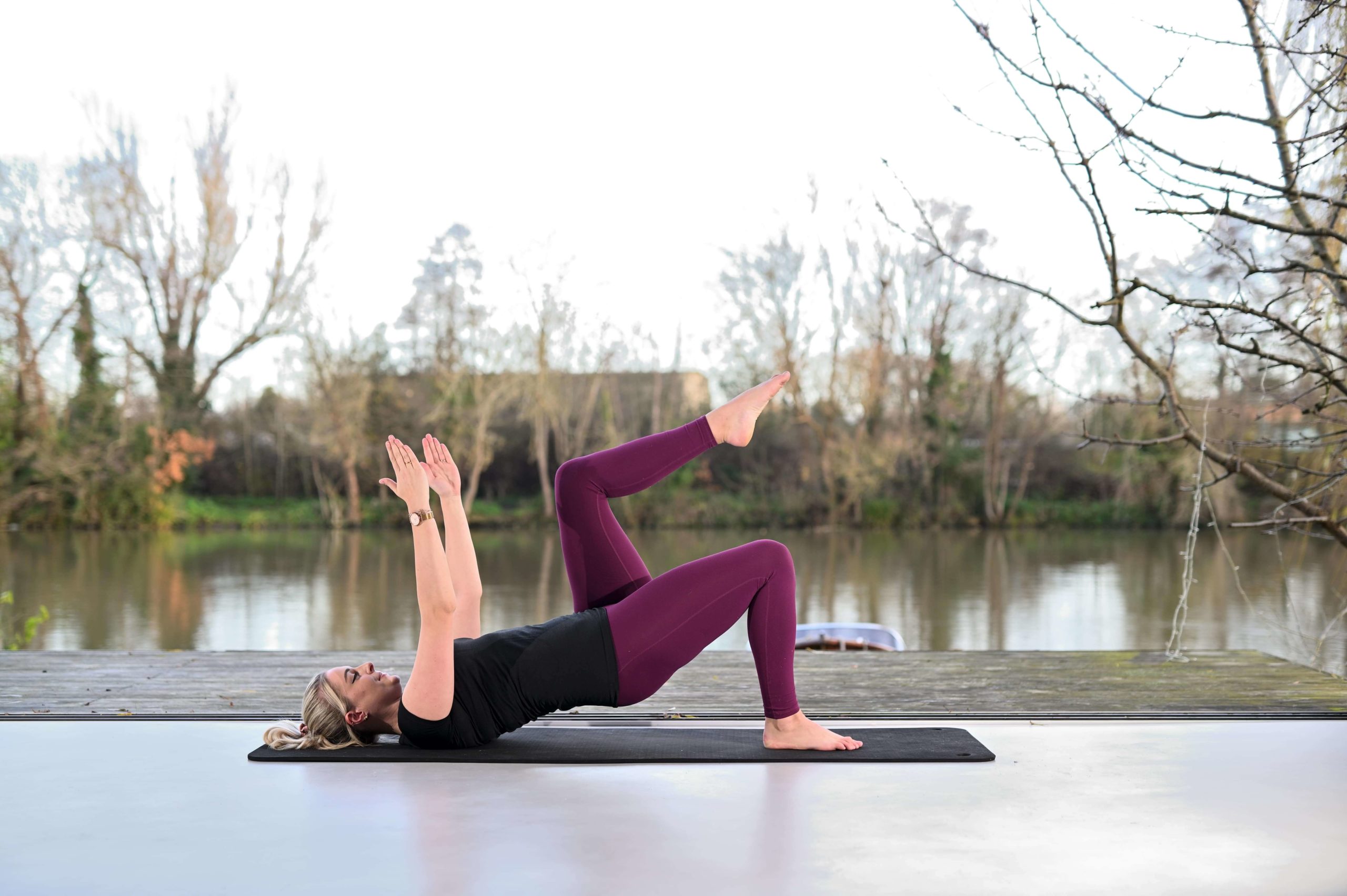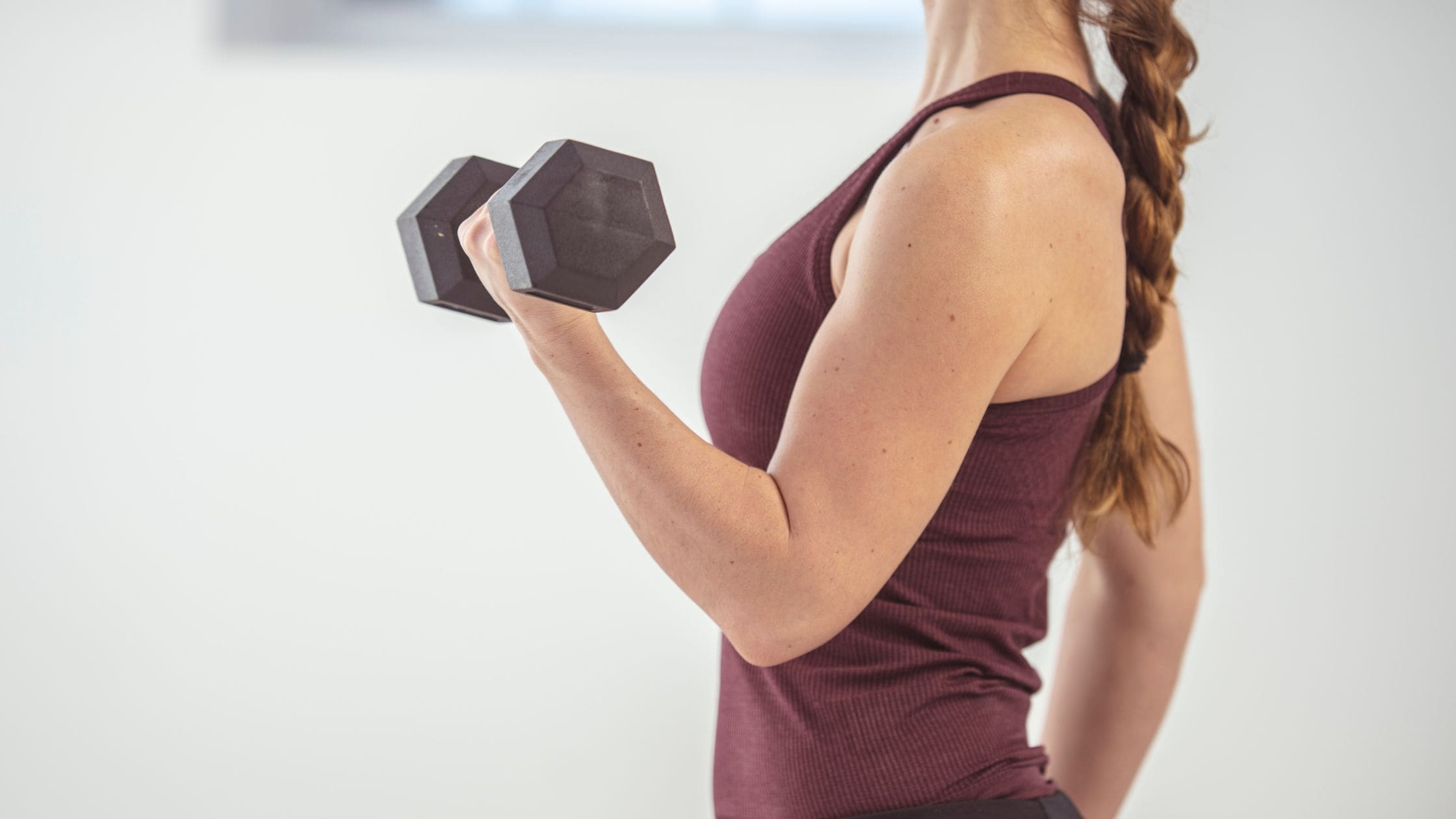Do you suffer from shoulder pain? Shoulder pain is among one of the most common aches and pains along with back and neck pain.
Whilst exercise may be the last thing you want to do whilst in pain, Pilates for shoulder pain is designed to help alleviate pain and support your shoulder injury.
Physio Pilates helps to build strength, improve postural imbalances and increase mobility, all of which can help to contribute to improving your shoulder functionality and comfort.
At Complete Pilates, we have launched an on demand Pilates programme for shoulder pain led by a shoulder specialist physiotherapist and clinical Pilates Instructor. The programme is a 6 week course including:
- 8 week access
- 6 long classes (approx. 1 hour)
- 6 short classes (approx. 15 mins)
- 3 masterclasses
- Free 15 minute phone call to discuss your condition, any worries or concerns.
For more information or to sign up to our on demand Pilates for shoulder pain, click here.
In this article, we go into greater detail around the causes of shoulder pain, the benefits of Pilates for shoulder pain and exercises you can and can’t do.
What are the causes of shoulder pain?
The shoulder joints are the most mobile joints in the body. They are a ball and socket joint which means they are incredibly mobile and have a wide range of movement. The joint allows the shoulder to move forwards and backwards as well as the arm to move in a circular motion.
Related reading: Pilates arm exercises you can do at home
When shoulder pain occurs it’s generally because the tendons or other tissues surrounding the shoulder, such as the bursa, have become damaged or inflamed which can cause a great deal of pain and discomfort. It can affect your sleep and daily life and if left untreated can cause secondary problems with the back or neck.
A number of factors and conditions can cause shoulder pain such as manual labour, playing sports, such as swimming, tennis or golf and repetitive movement at work. You’re also more likely to have problems with your shoulder after age 60 as the soft tissues surrounding the shoulders tend to be more susceptible with age.
Causes of shoulder pain include:
- rotator cuff tendinopathy.
- arthritis
- torn cartilage
- torn rotator cuff
- swollen bursa or tendons
- bone spurs (bony projections that develop along the edges of bones)
- pinched nerve in the neck or shoulder
- broken shoulder or arm bone
- frozen shoulder
- dislocated shoulder
- injury due to overuse or repetitive use
- spinal cord injury
- heart attack
- referred pain – the result of injury to another location in your body
In many cases, you can treat shoulder pain with treatment such as physiotherapy or exercise to do at home, such as Pilates. Medication or surgery may also be necessary.

The benefits of Pilates for Shoulder Pain
Pilates can be of enormous benefit to anyone who suffers with shoulder pain. It’s also a great tool to prevent shoulder pain from occurring. Pilates exercises for shoulder pain help to strengthen the stability muscles (the rotator cuff) in the shoulder, it’s support system and the body as a whole.
Some Pilates exercises use body weight to encourage correct control and alignment around the shoulders and neck. Specific movements also encourage good coordination between muscles – allowing them to switch on in the correct sequence which is vital for good shoulder function.
There are many benefits of Pilates for shoulder pain including:
- Reduced or eliminated shoulder pain
- Long term management of pain through exercise
- Increased rotator cuff strength
- Increased shoulder movement and function
- Reduced risk of injury
- Quicker recovery post shoulder injury
- Return to sport
Pilates exercises for shoulder pain
Below are four simple Pilates exercises you can do at home to help you manage your shoulder pain.
1. Quadruped with banded L
Quadruped is just one of many shoulder exercises which you can do at home to help manage your shoulder pain. It not only works all the muscles around your shoulder but challenges your stability and improves posture. This movement does require a resistance band around the wrists and a mat, or something soft, to lean on.
- Start by coming onto all fours.
- With your index finger pointing straight up your mat and hands underneath your shoulders, keep your weight backwards into your legs a little bit.
- Have your hands wide enough apart that there is a little bit of tension on the band before you start.
- Press into the ground to lift out of your shoulder and let one hand hover off the floor.
- Reach the hand forwards, back underneath you then out to the side.
- Keep repeating this movement, making sure you are always pressing into the ground with your static arm to stay lifted out of your shoulder. You can change the order of this to keep you challenged.
- Repeat forwards and outwards 8-12x before switching to the other side.
Try to maintain your neutral spine throughout the movement and keep the scruff of your neck lifted towards the ceiling. Do modify this exercise by doing it on light fists to take some of the pressure off your wrists. If you have an acute shoulder problem or you’ve recently had surgery we would advise against doing this move, unless you have checked with your physio who is treating you.
2. Quadruped with banded circles
This is another version of quadruped which aims to work the stability muscles around your shoulders. It’s a great warm up if you do lots of heavy lifting or sports and again is also ideal for improving your posture.
- On all fours with the light resistance band around your wrists, find your neutral spine.
- Stand into one hand and push the ground away so that you allow your opposite hand to hover off the floor.
- Start to make small side plate size circles in one direction, keeping the static arm straight and pressing into the floor.
- Repeat 8-12x in one direction, before changing to the opposite side.
Like with most of our exercises this one can be modified. If your wrists struggle with this, take some of the pressure off by forming a soft fist.
3. Kneeling shoulder shrug
Kneeling shoulder shrug is the perfect exercise if you feel you have a tight neck or your upper trapezius muscle is tight. This I often actually due to weakness and difficulty managing the position of the shoulder and shoulder blade. It’s also a great way to improve posture and upper body strength.
- Start by kneeling and pressing your feet into the floor to send your pubic bone forwards and create some stability around your pelvis.
- Hold onto a light weight, face your palm forwards and take your arms out to around 45 degrees.
- Shrug your shoulders up, pause, then slowly lower your shoulders back down again.
- Repeat this 8-12x
If you struggle with migraines or tension related headaches, this might not be suitable. Do check in with us first if you need to.
4. Knee hovers to side plank
Knee hovers to side plank is an amazing shoulder exercise to do to work all the muscles around the shoulders and improve shoulder strength.
- Start on all fours, with your toes tucked underneath.
- As you exhale, press into your arms and hover your knees off the floor.
- Take your left hand into the middle, trying to keep your knees low to the ground.
- Press into your left arm and start to rotate the body, and legs, to the left. You will end up with your legs apart, facing the left side of the room and your right arm up towards the ceiling.
- Rotate back to all fours, bring your right arm into the centre and rotate to the right
- Keep repeating 8-12x on each side.
If you have an acute wrist or shoulder problem, it might be worth modifying the move by simply threading the needle.
Pilates exercises that should be avoided for shoulder pain
There are several exercises you may need to avoid if you have shoulder pain. Generally exercises which require shoulder abduction (movement out to the side), high ranges of shoulder flexion (lifting forwards) and overhead movements can potentially aggravate pain. Arm exercises which require a lot of weight bearing, even in the neutral position can also aggravate pain.
Example exercises to be cautious with include:
- Breastroke arms overhead
- swimming arms overhead
- Plank and push ups
However, at the right time and with the right loading these will also be needed to progress your rehabilitation and give you full function.
It is always worth consulting with an exercise specialist, like a specialist physiotherapist or Clinical Pilates Instructor for individual advice so that you are doing the right things at the right time for you and your shoulder.
Why you should take up Pilates if you have shoulder pain or Pilates for Shoulder Pain On Demand Classes
If you have shoulder pain then Pilates could be the answer to improving and managing it. Especially if you are struggling to get back to your normal day to day activities or exercise programme or your physiotherapy is just not getting you back to full function.
Here at Complete Pilates we run a 6 week Pilates for shoulder pain course which is led by Annabel Hawker; a physiotherapist, clinical Pilates instructor and shoulder expert.
The course includes;
- 6 long classes (approx. 1 hour)
- 6 short classes (approx. 15 mins)
- 3 masterclasses
- Access to a number of articles based around shoulder anatomy and the body as a whole.
- Links to informative vlogs and podcasts based on shoulder pain
- A free 15 minute phone call to discuss how this course could help and if it’s right for you.
Annabel will always advise you on modifications you can make to ensure the course is right for you so that you can build back your strength, stability or mobility. This course is also suitable to work alongside your regular physiotherapy or exercise programme.
Do not hesitate to get in touch if you have any questions or contact us on 0203 764 5668 for further information.
These blogs are designed to give information to everyone, however, it is important to remember that everyone is different! If you have not seen one of our therapists and have any questions about injuries, what you have read or whether this may be useful to you, please just ask. We are more than happy to help anyone and point you in the right direction. Our biggest belief is that education is key. The more you understand about your injury, illness and movement, the more you are likely to improve.





